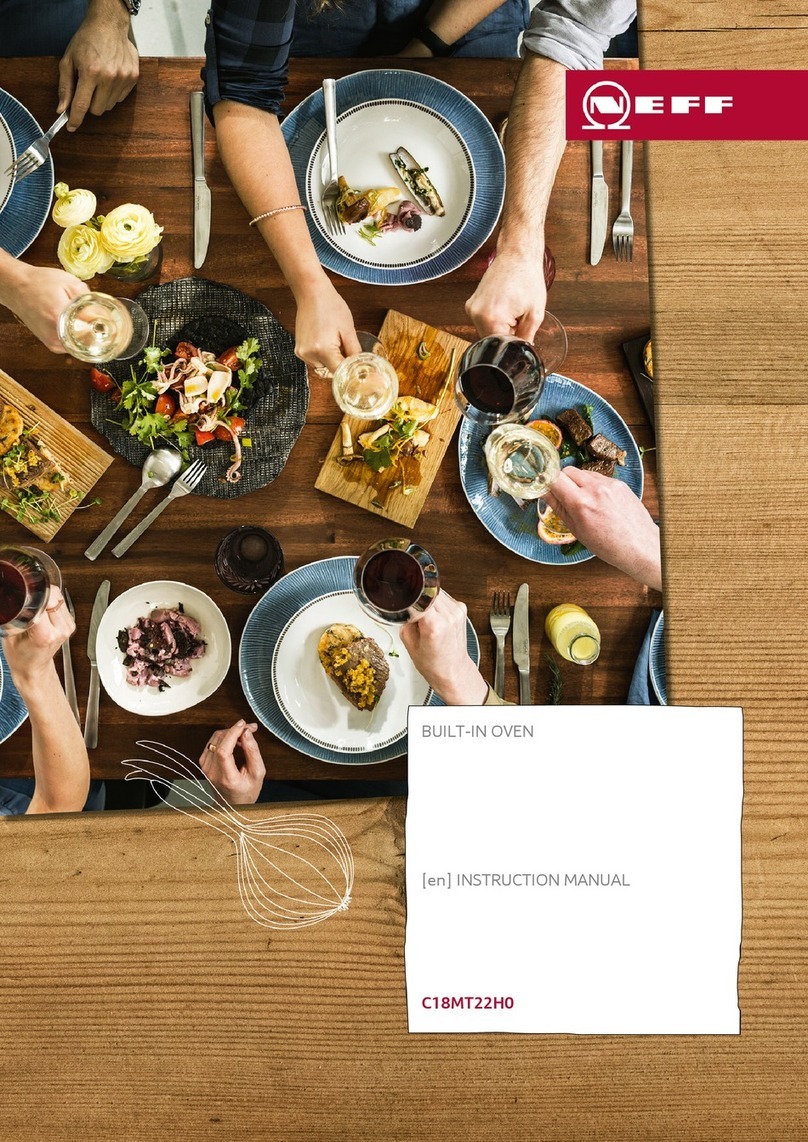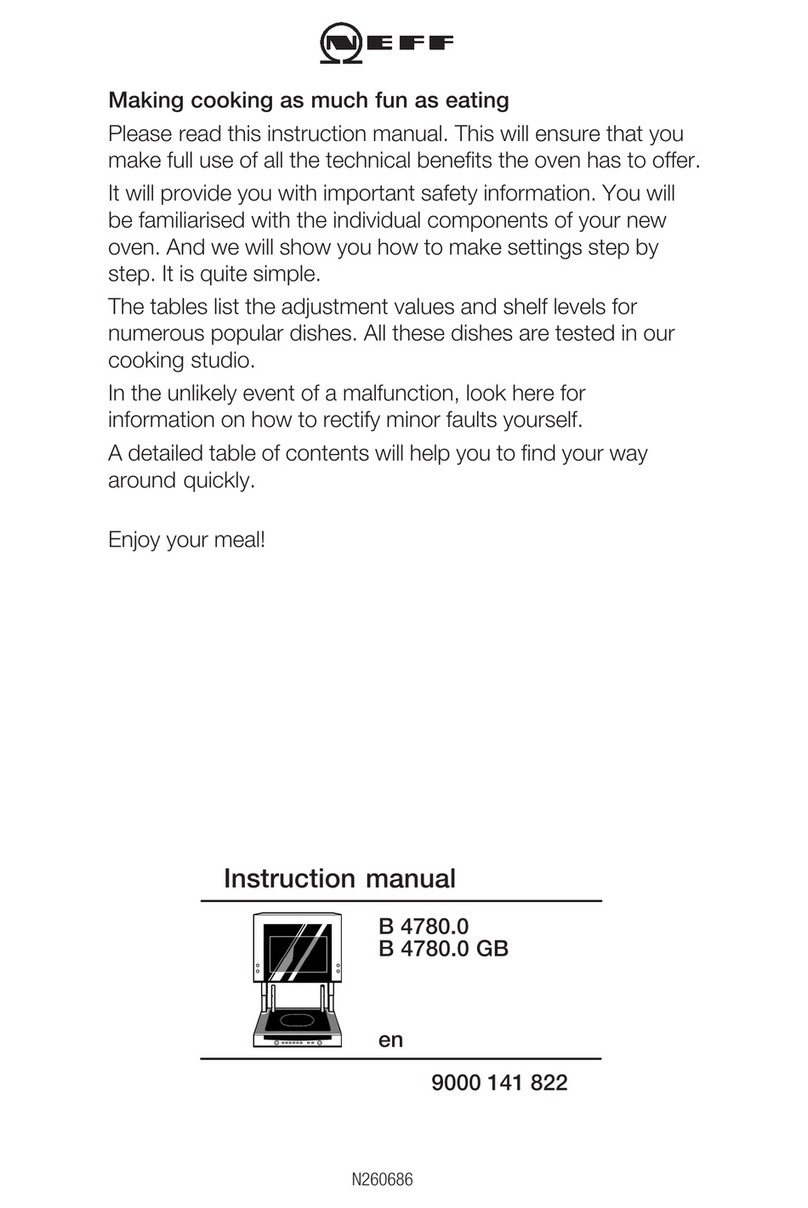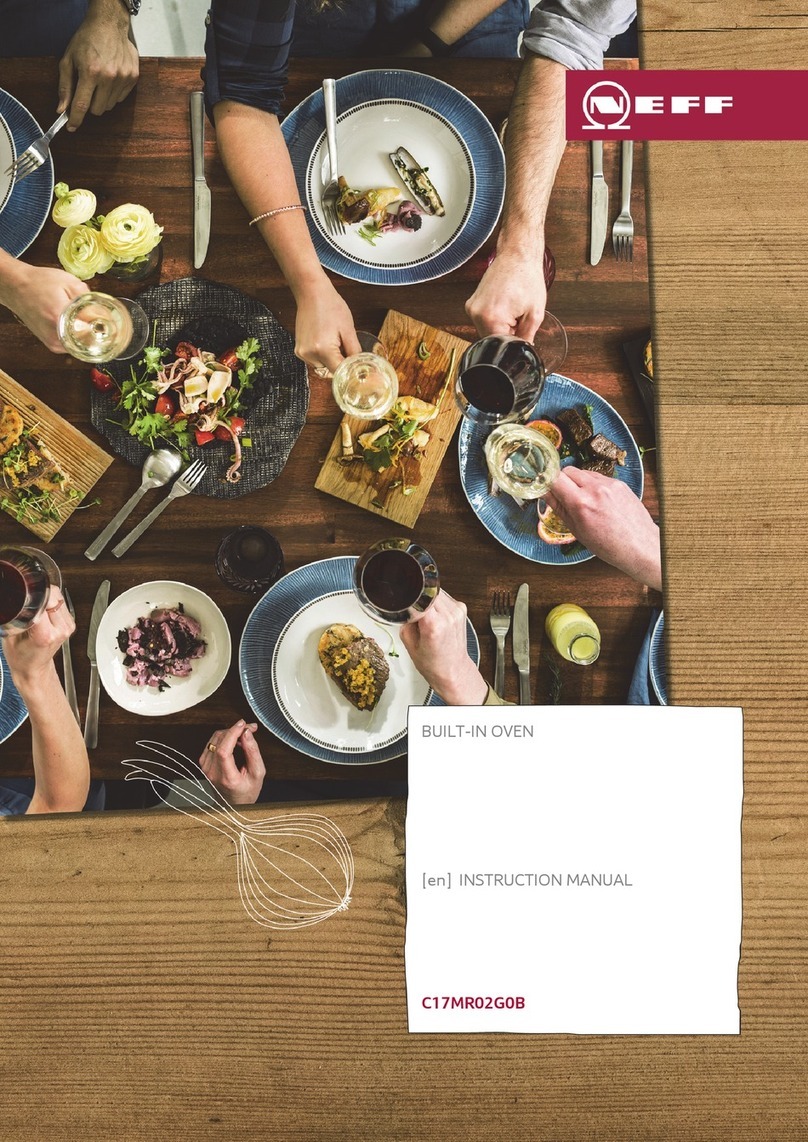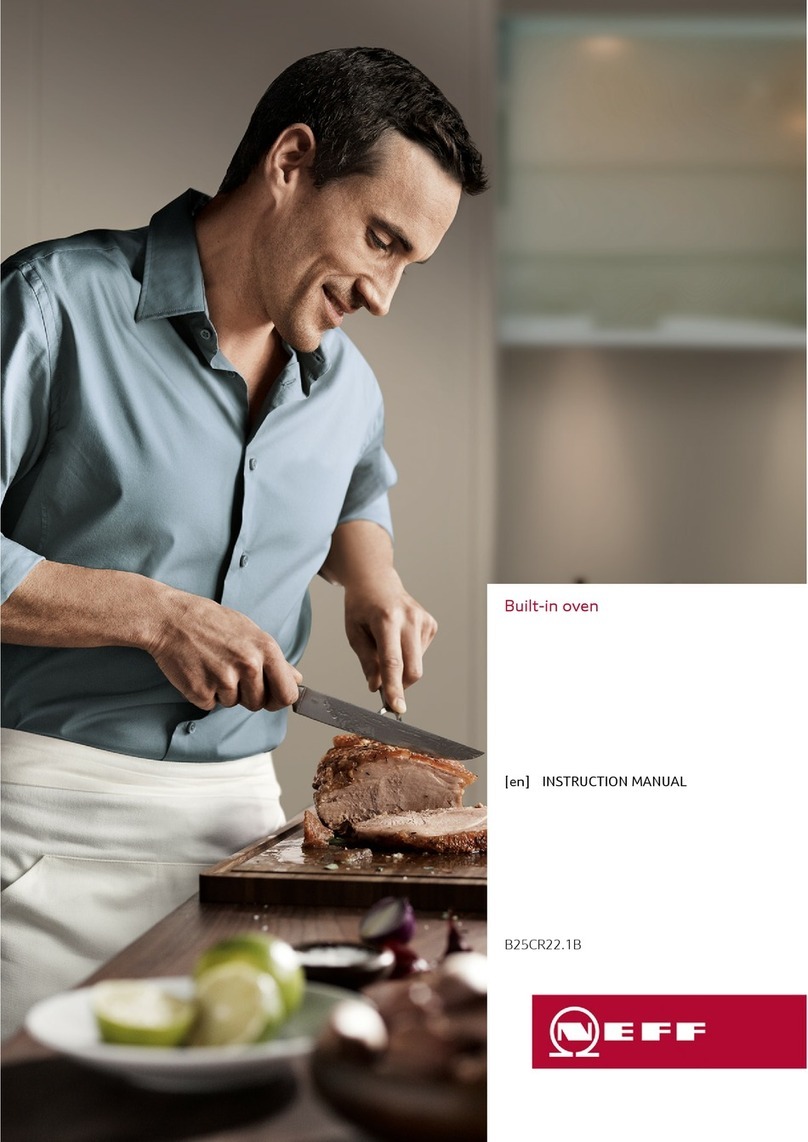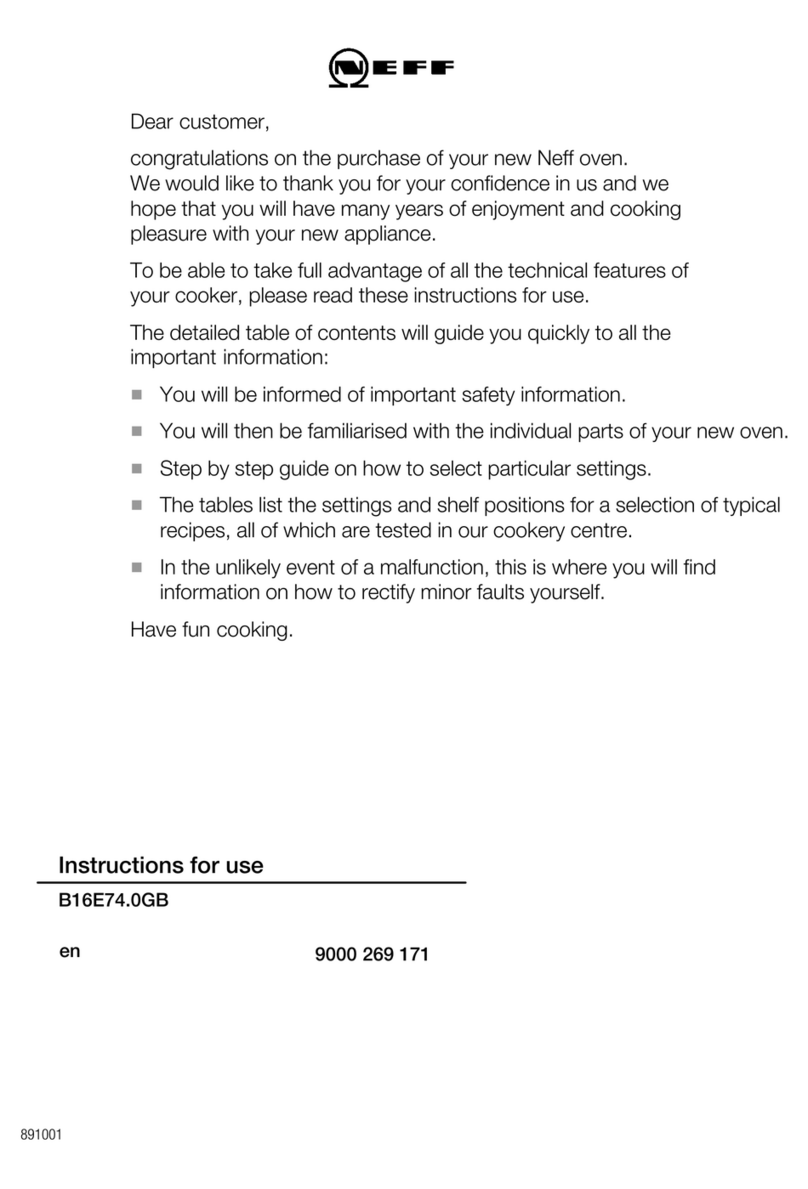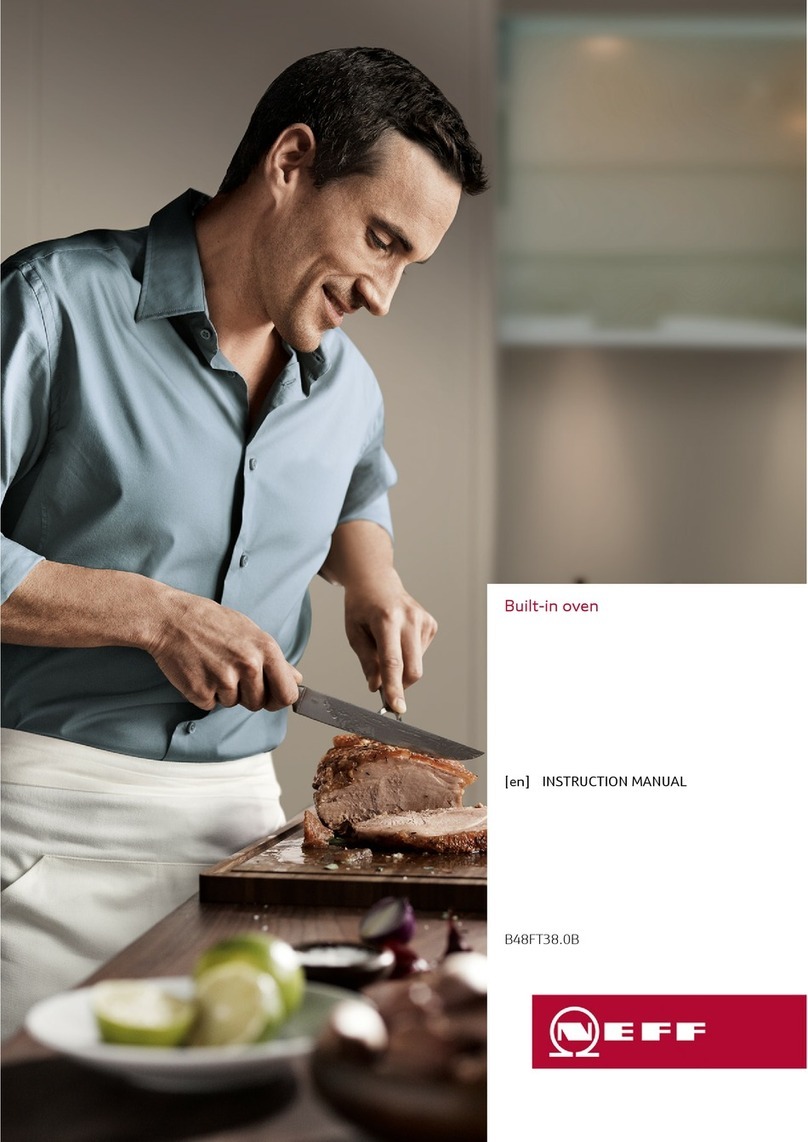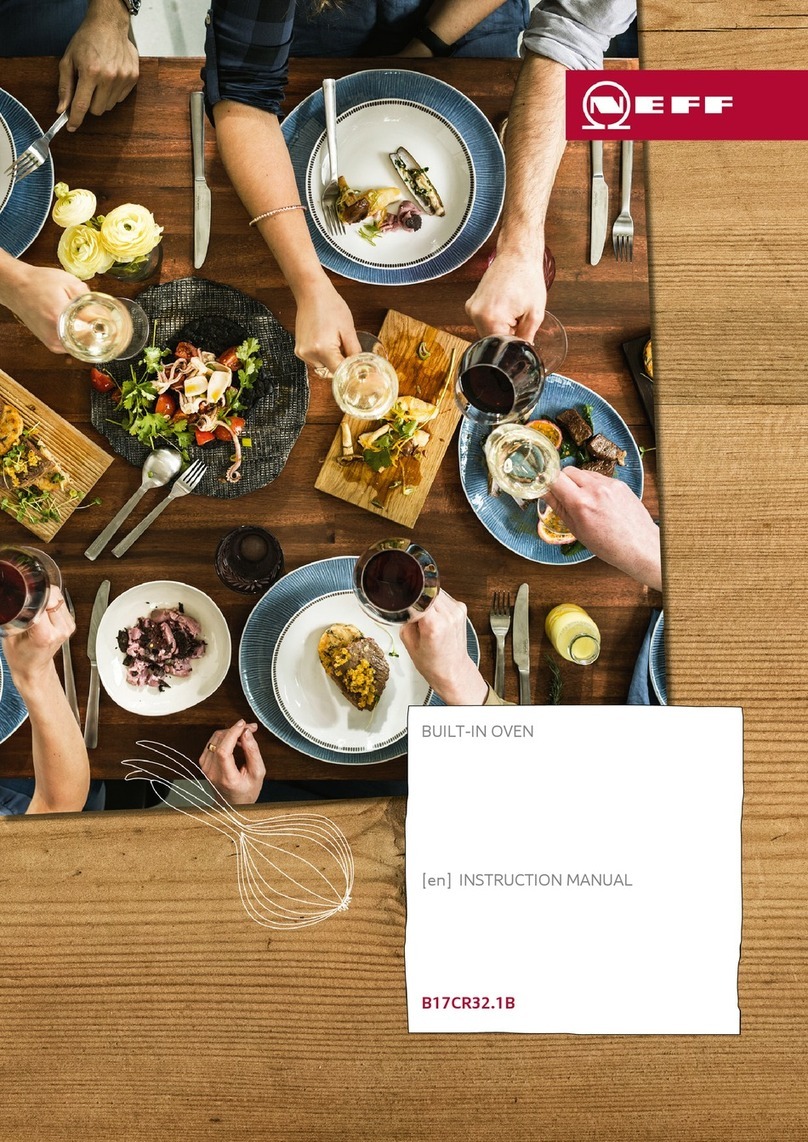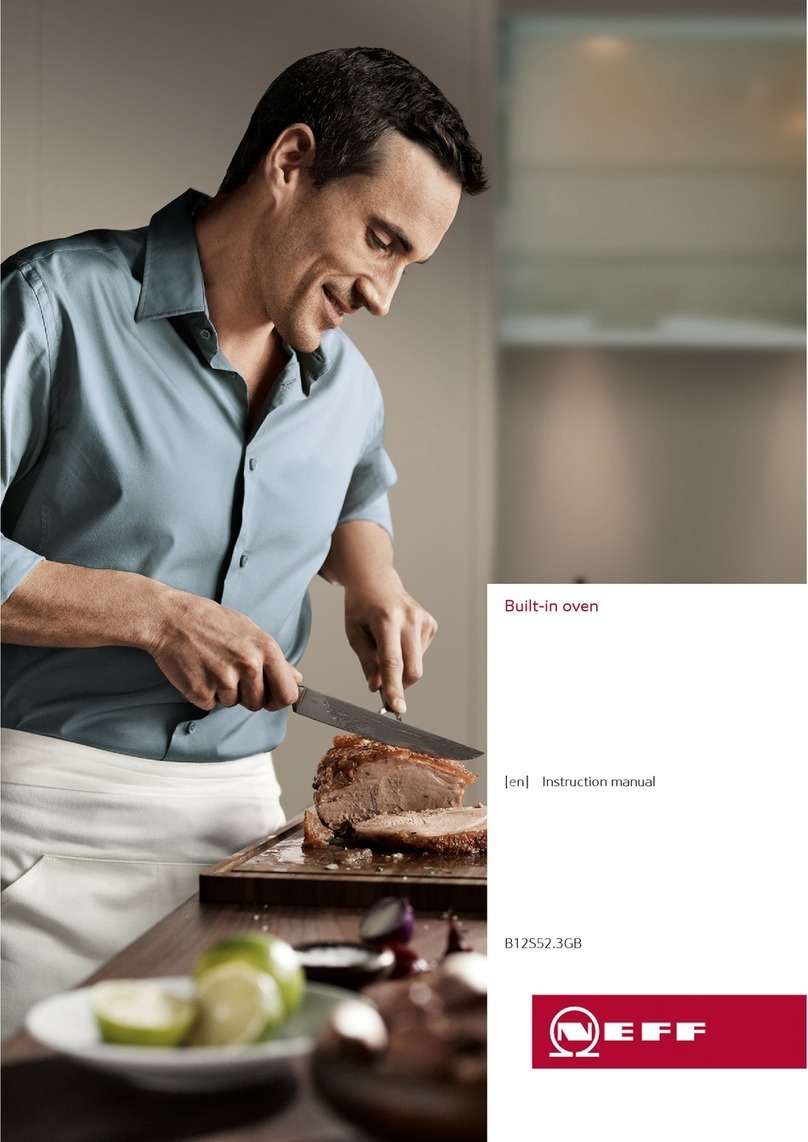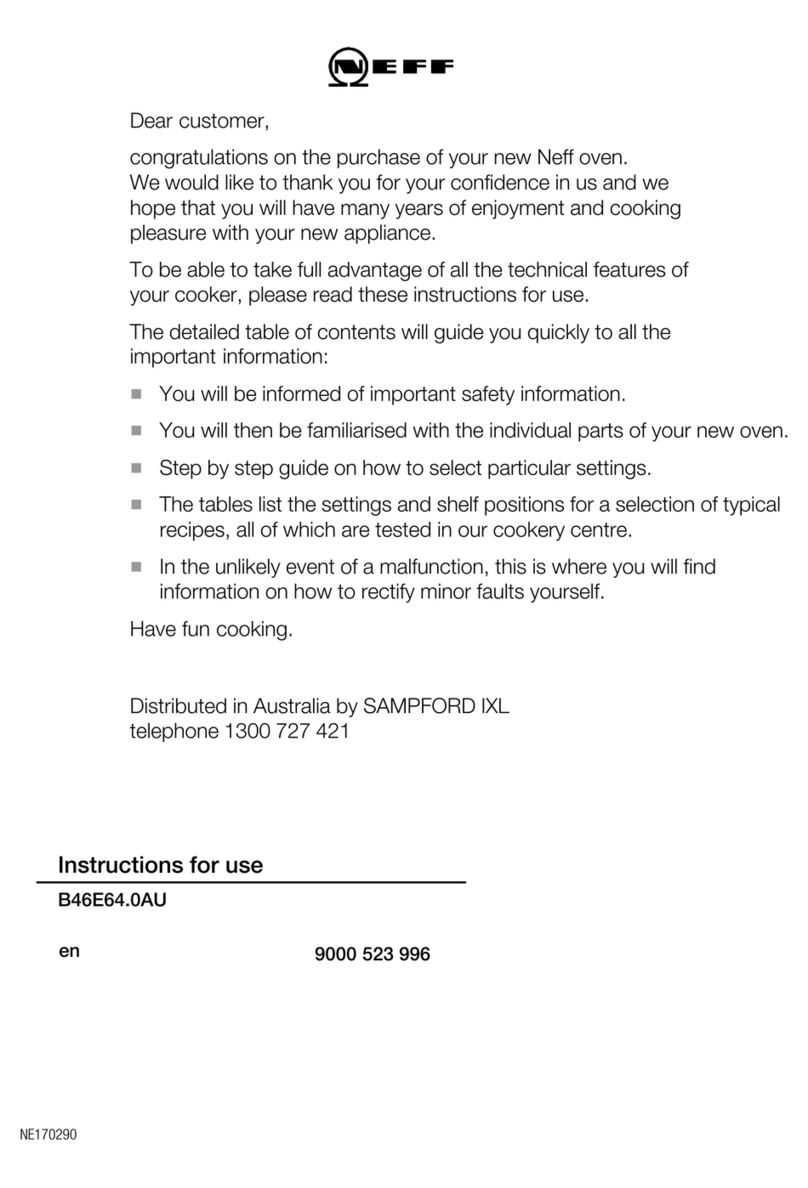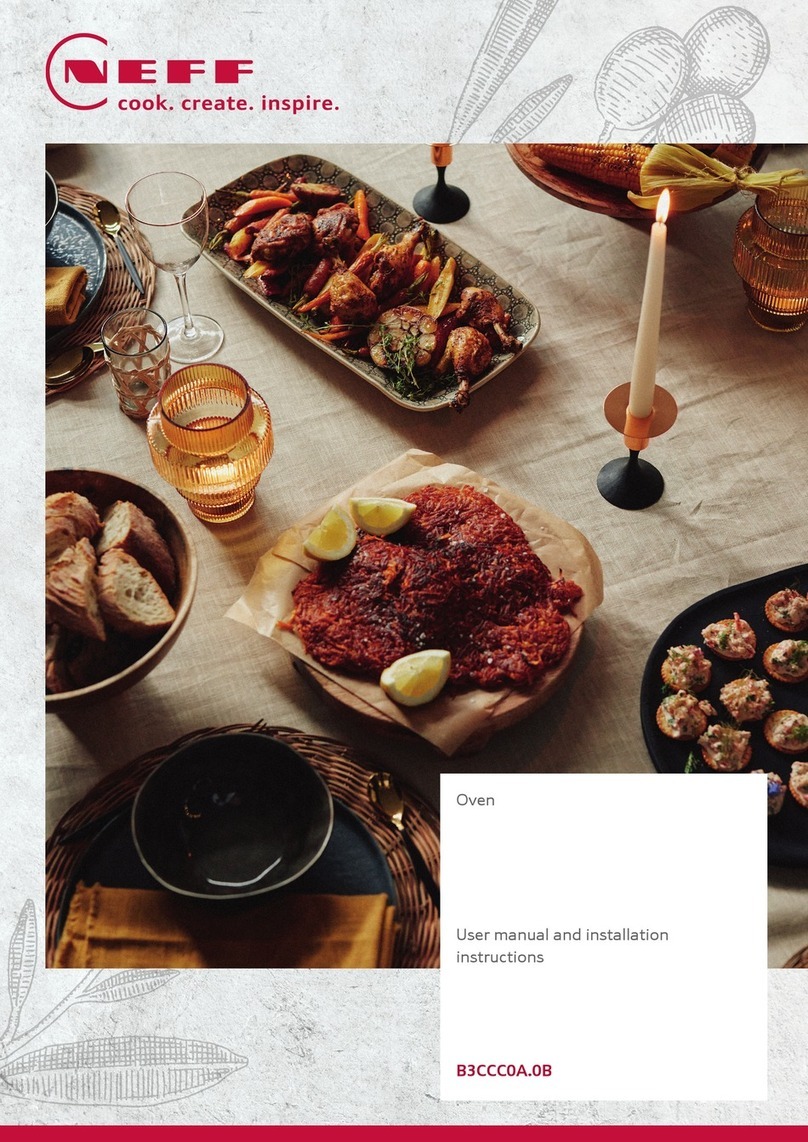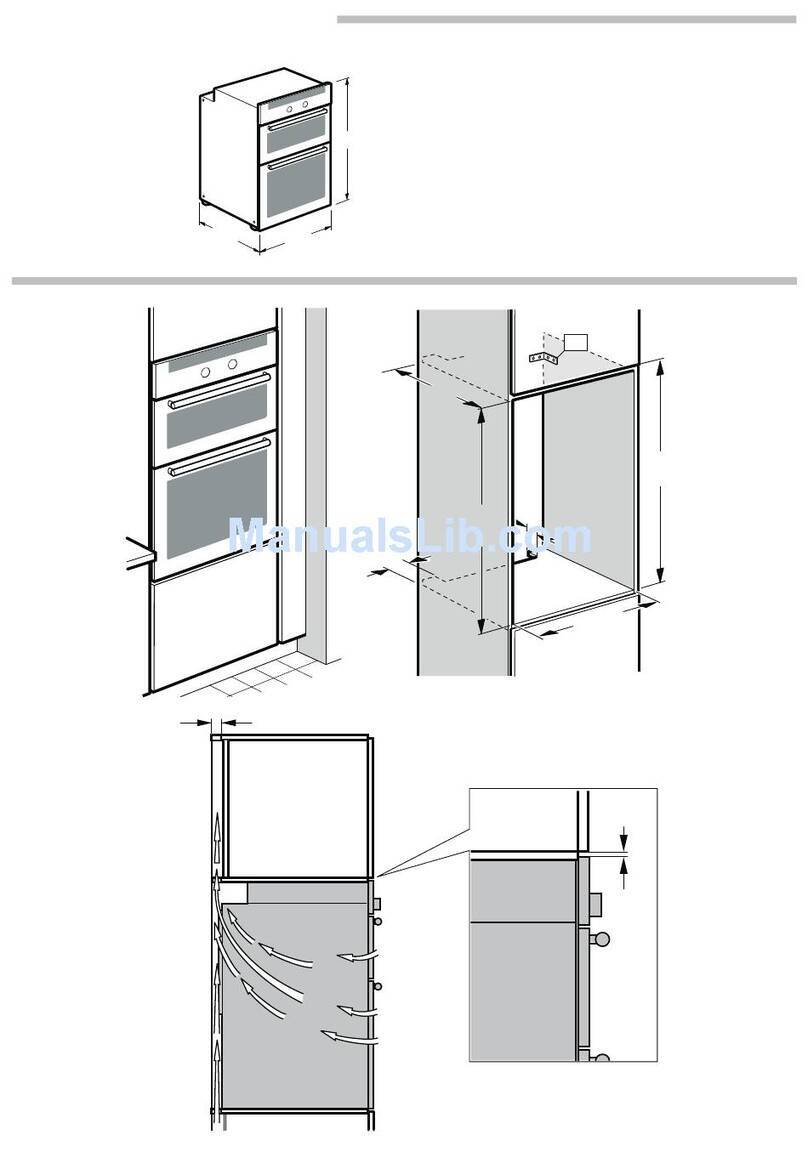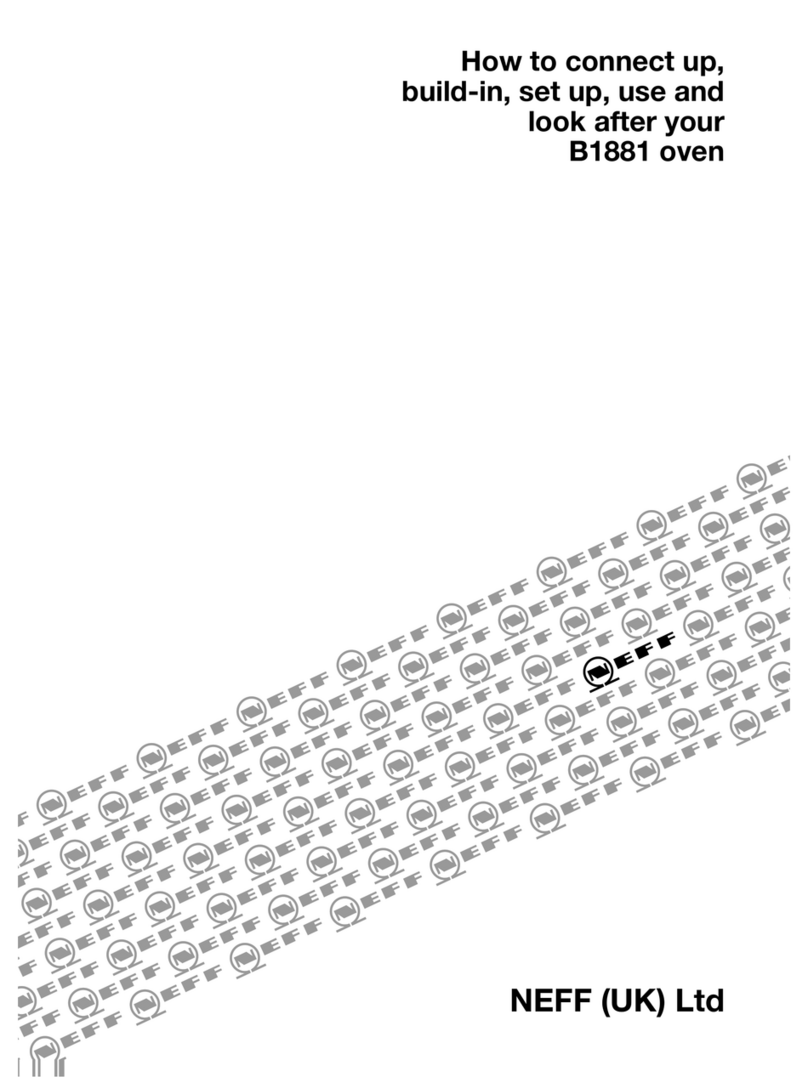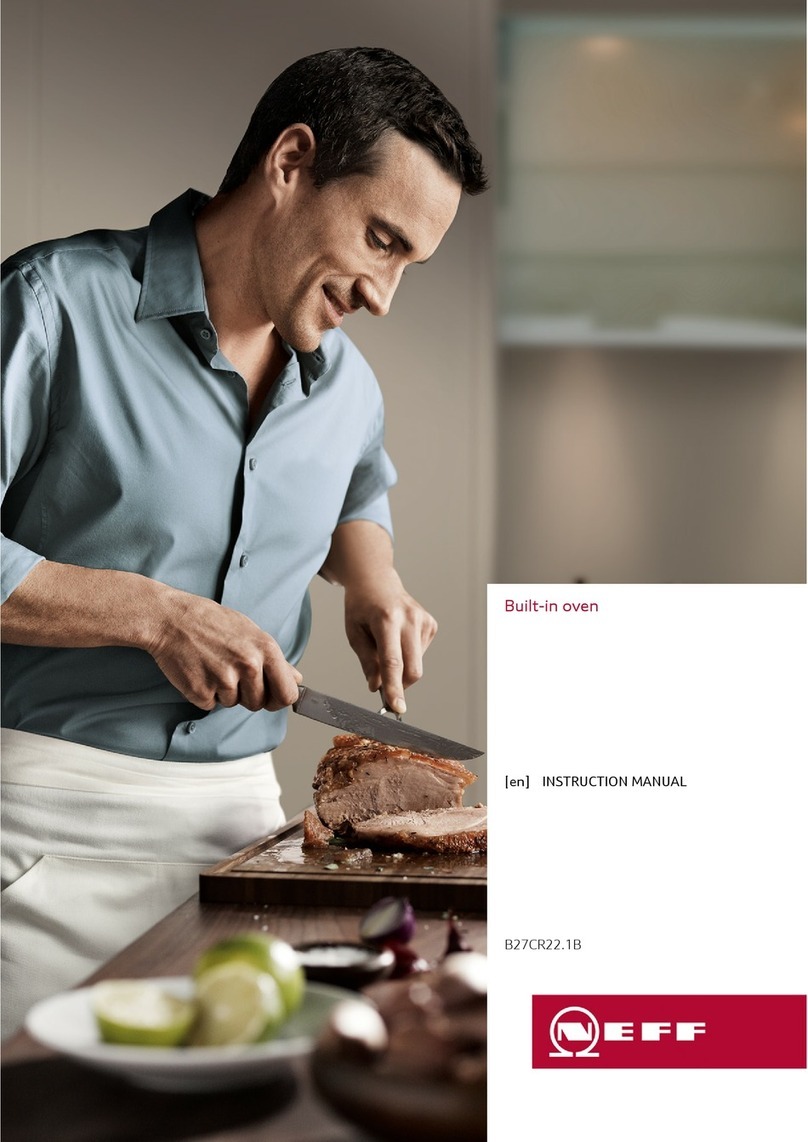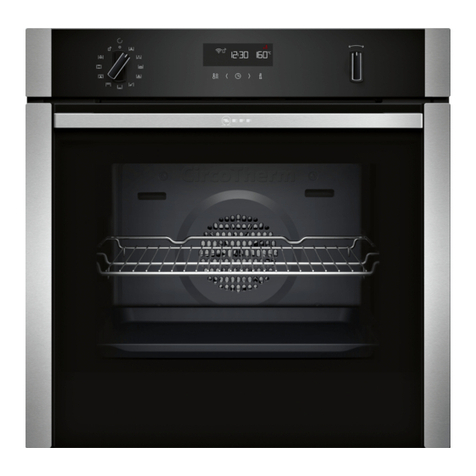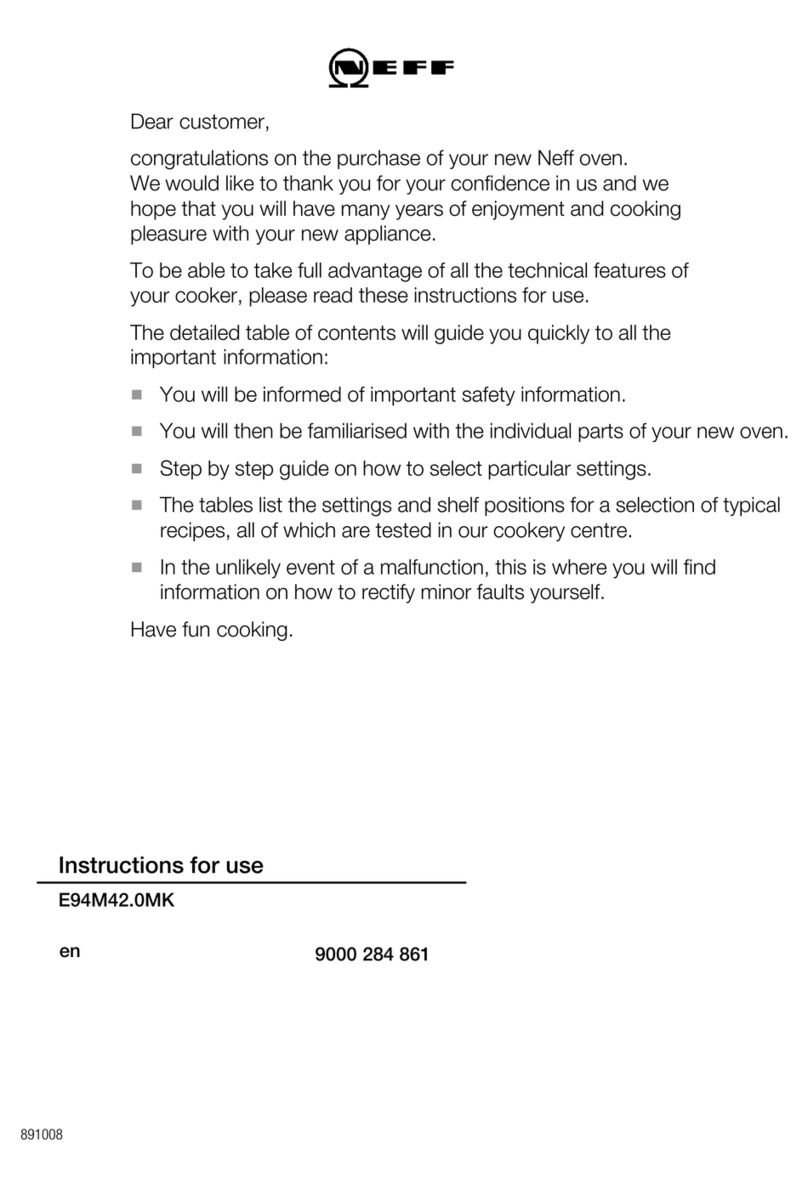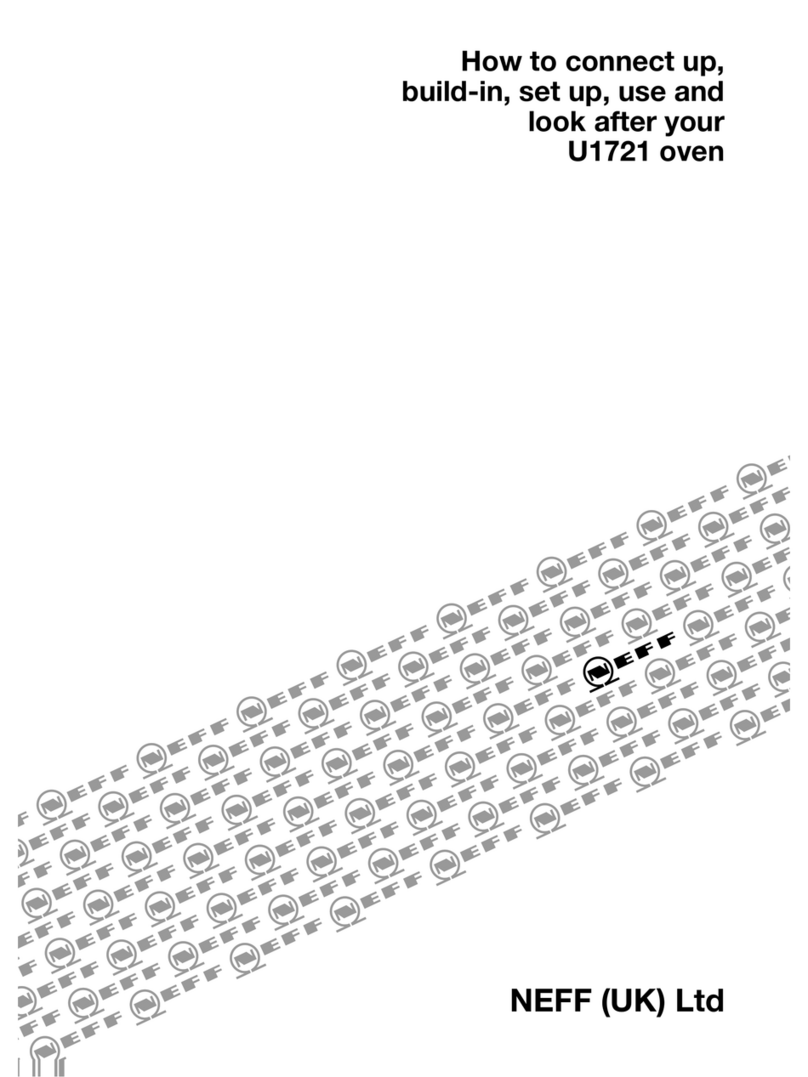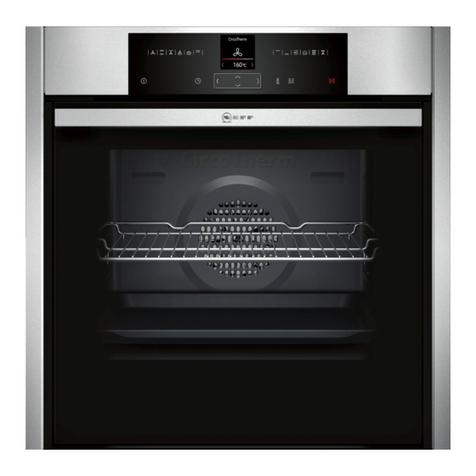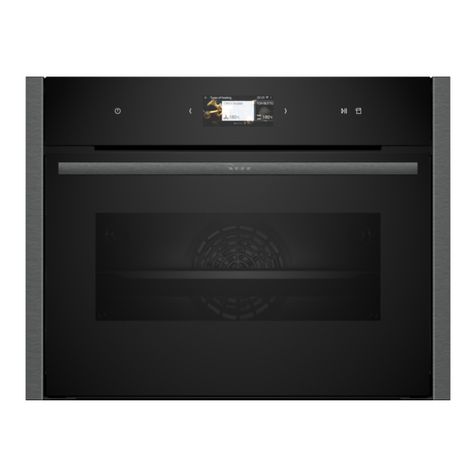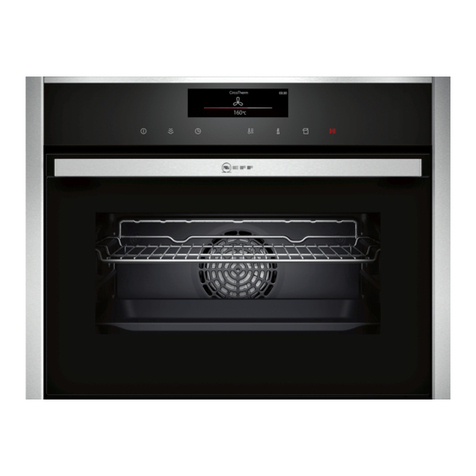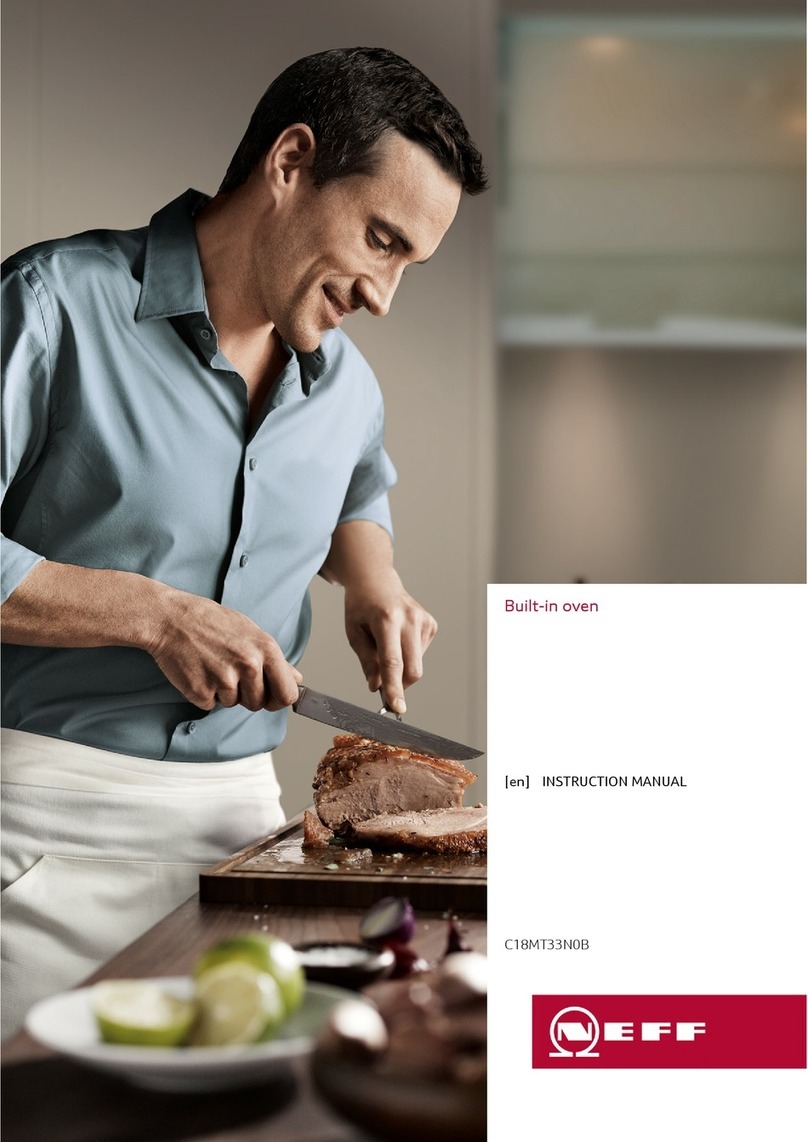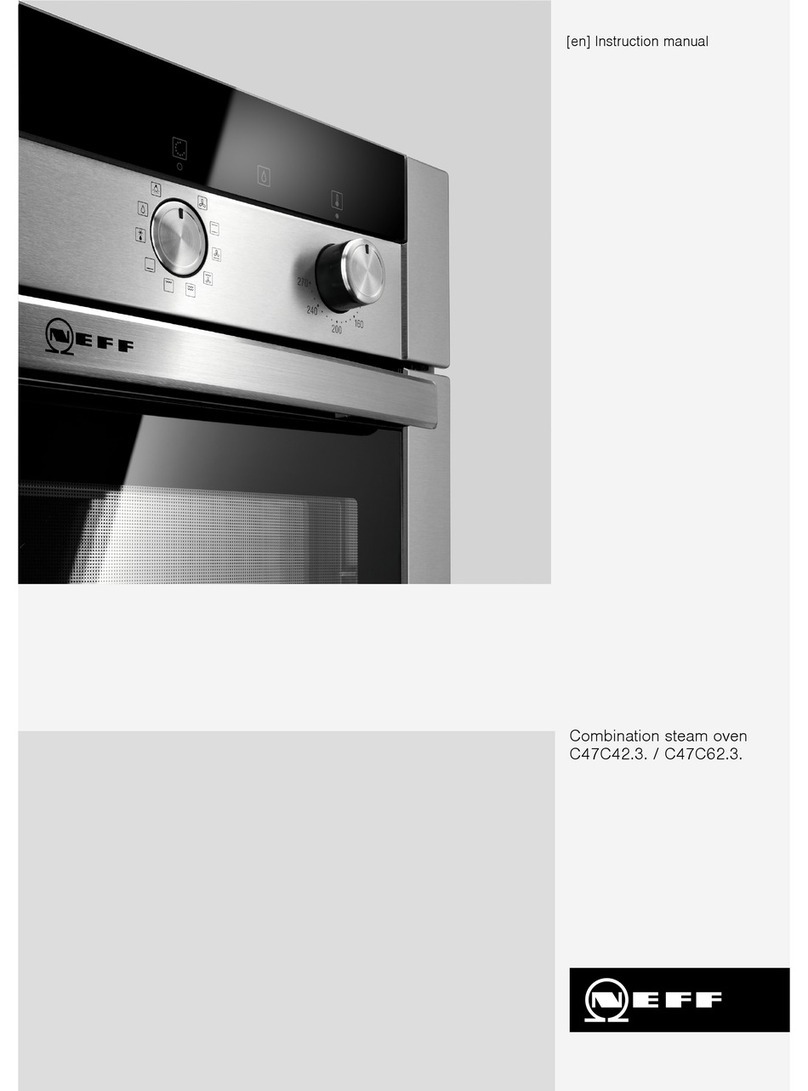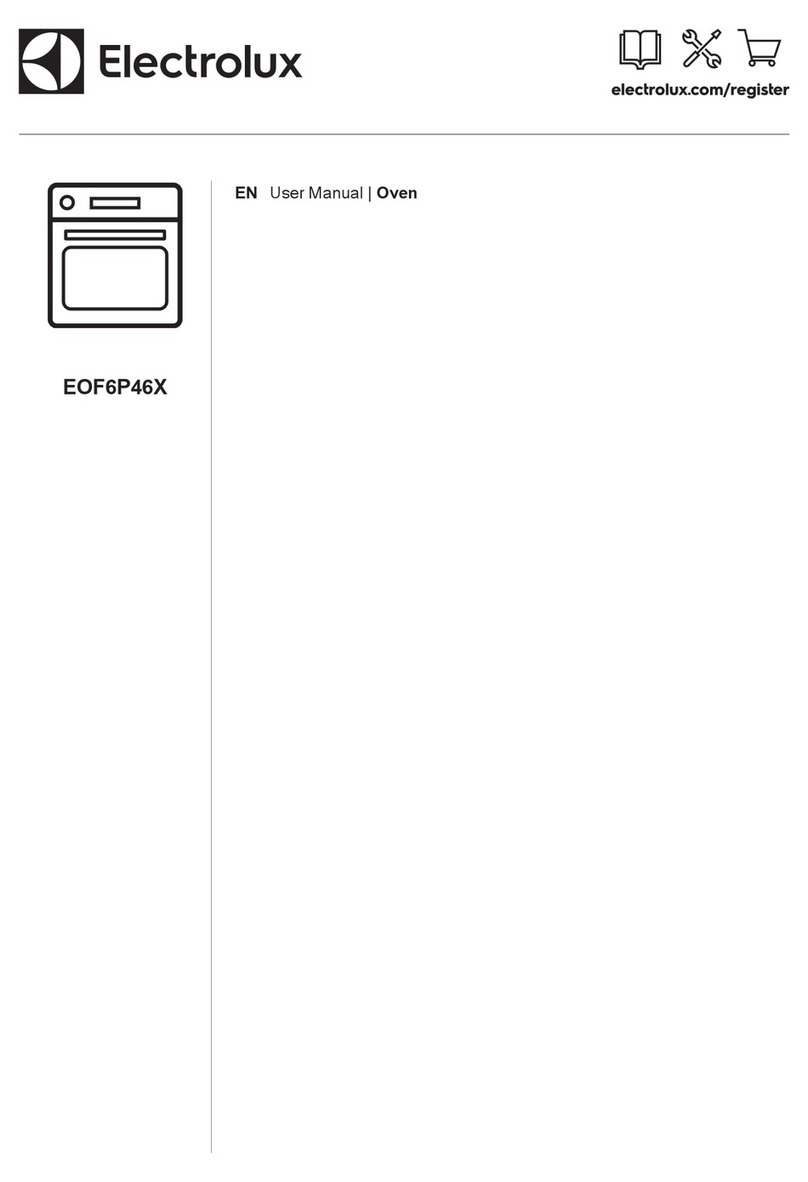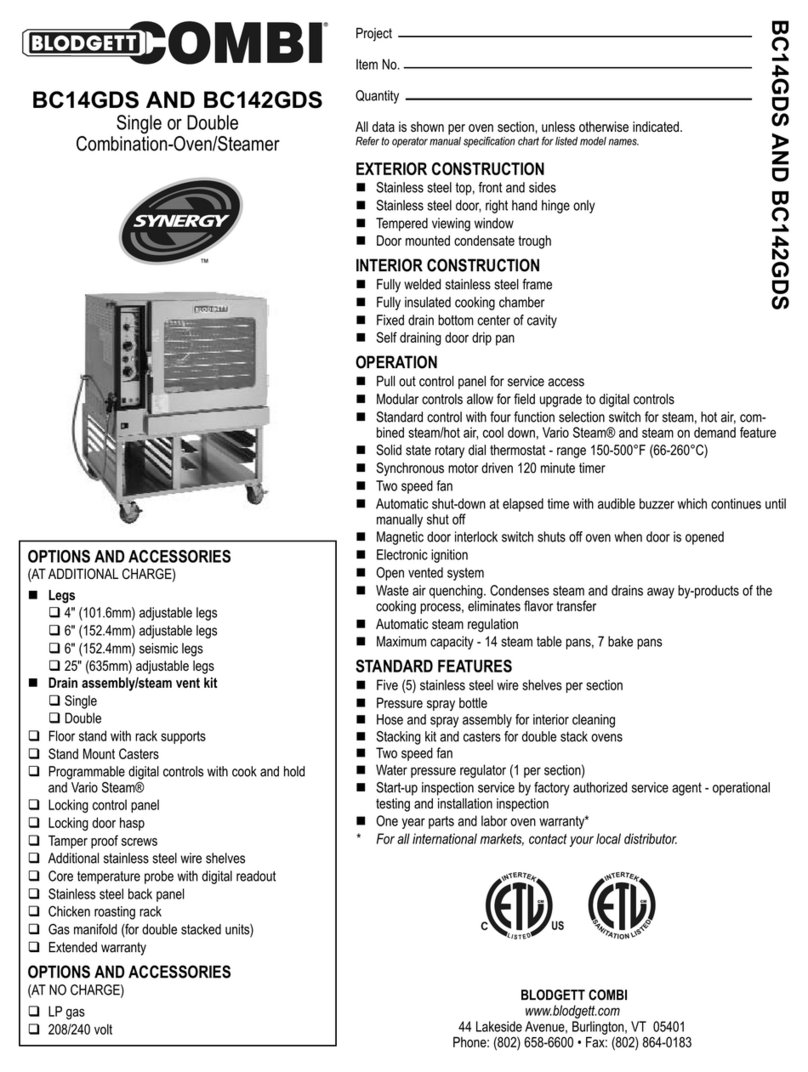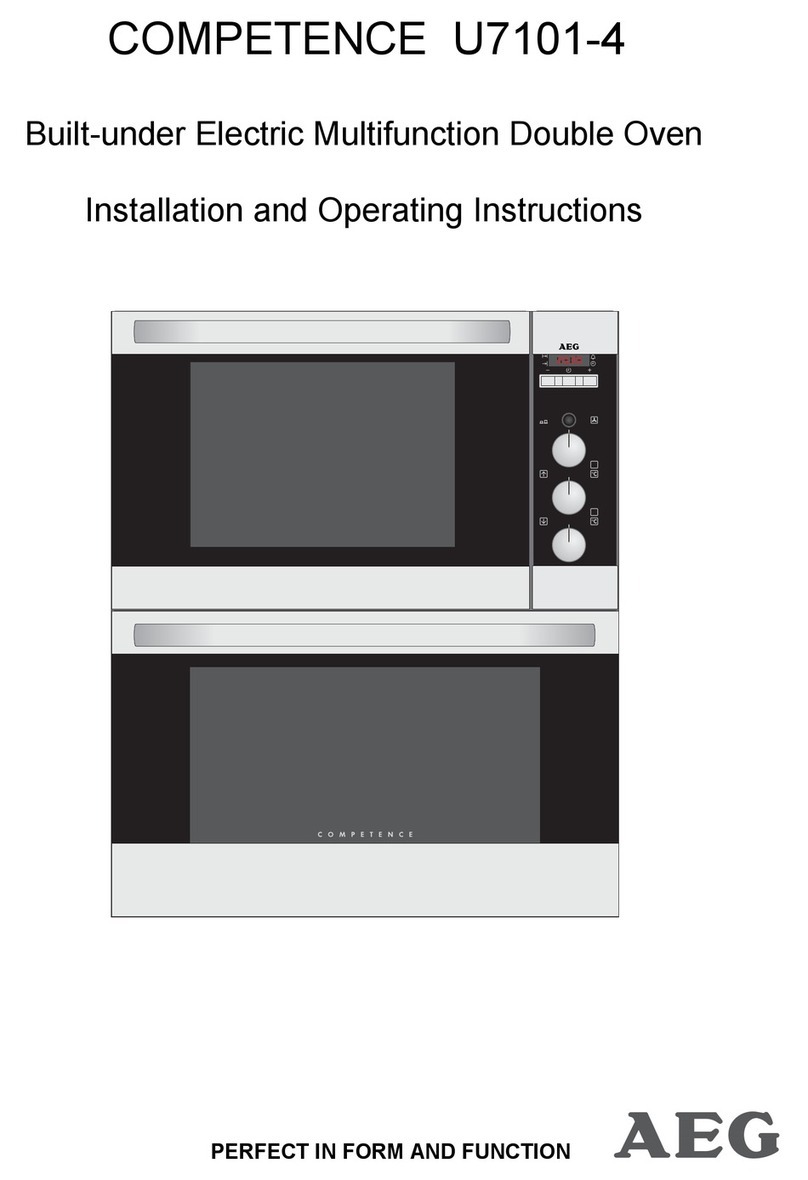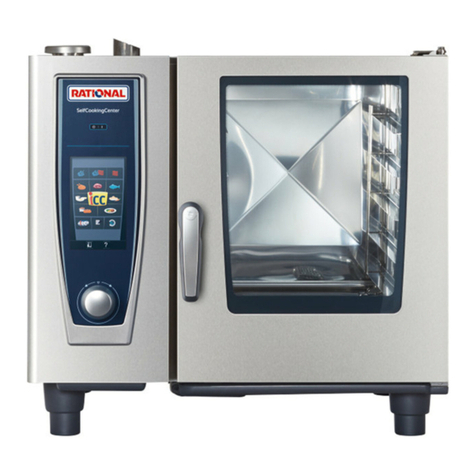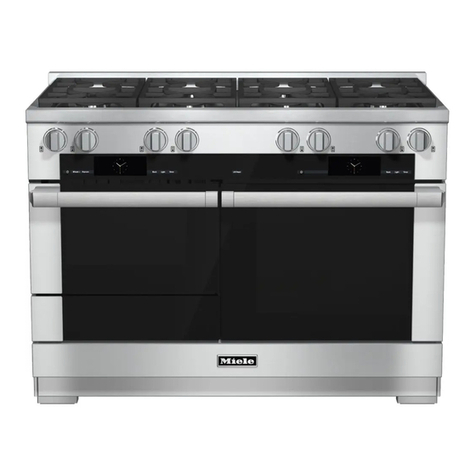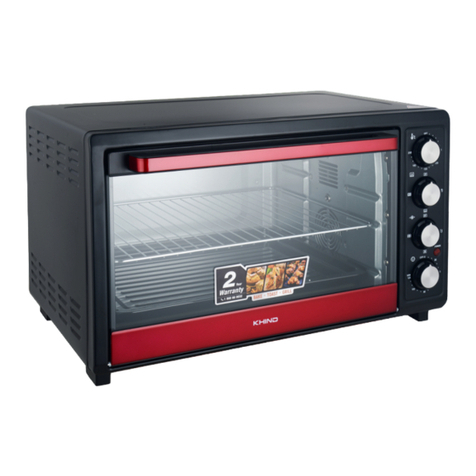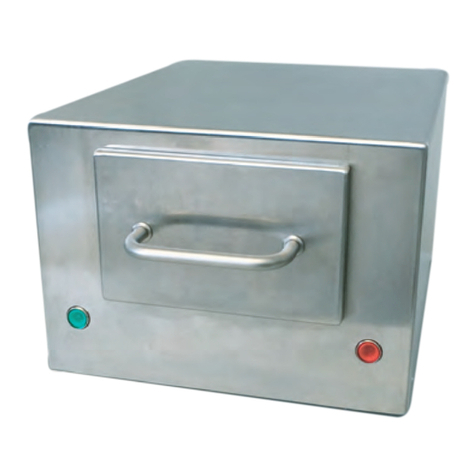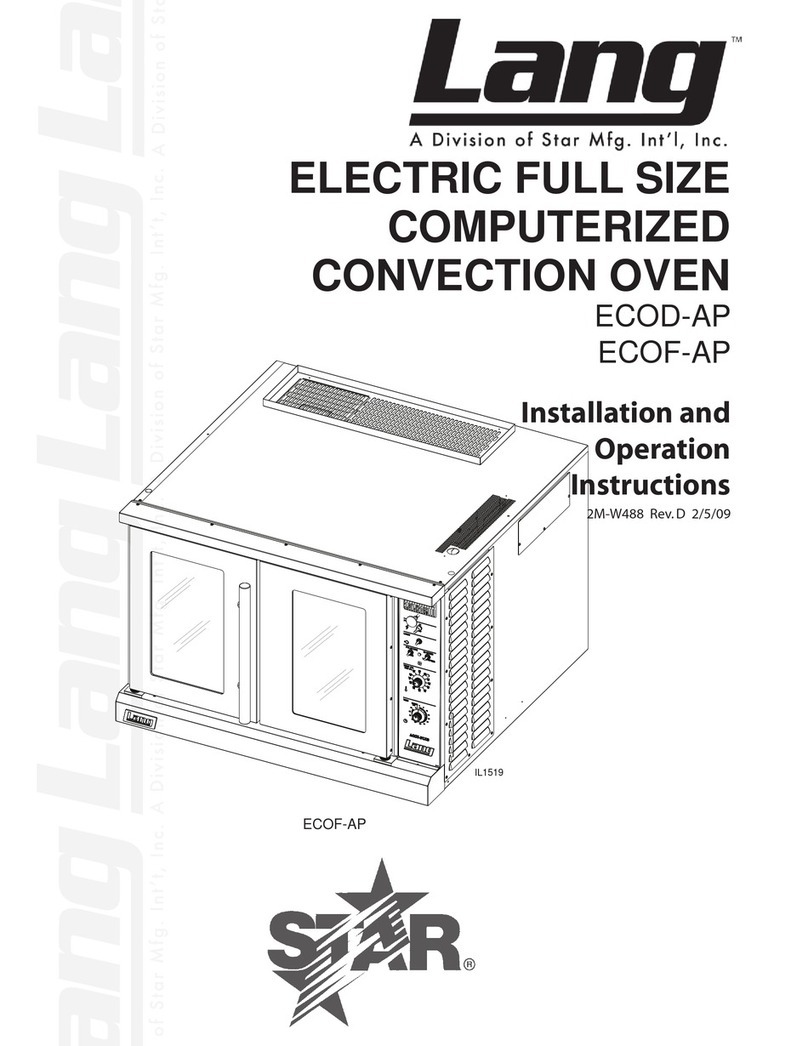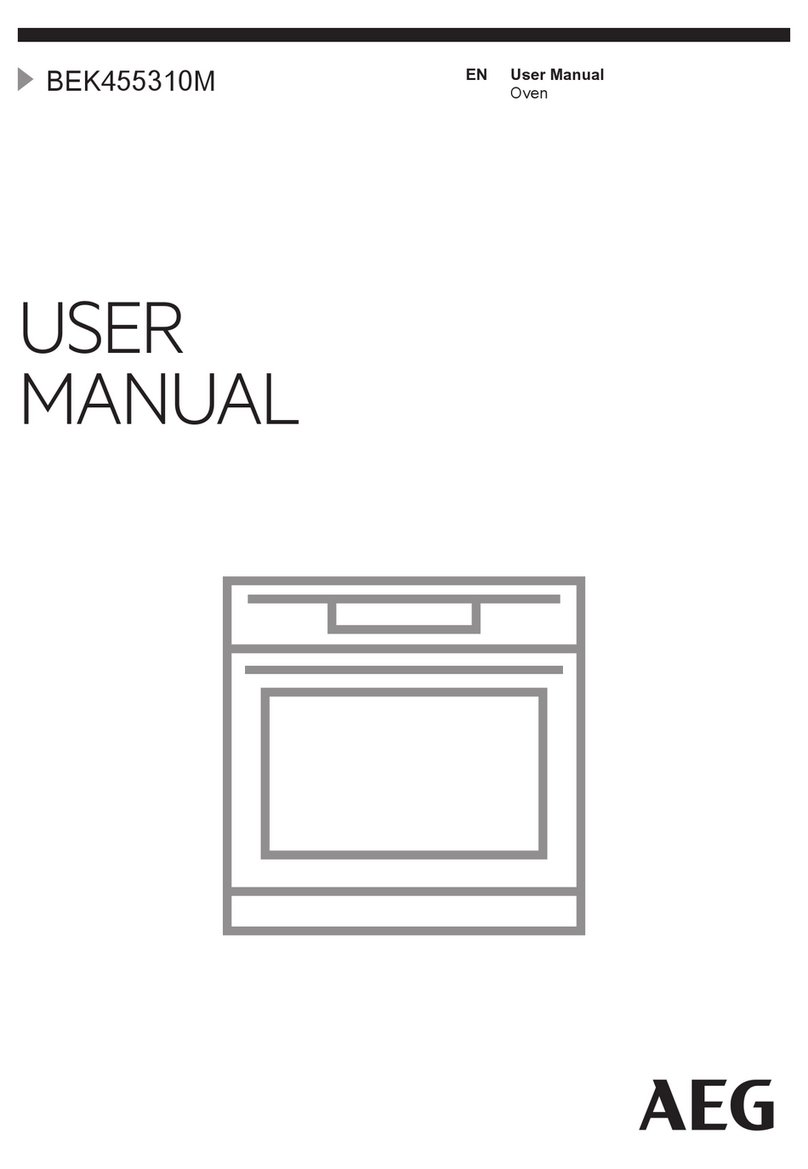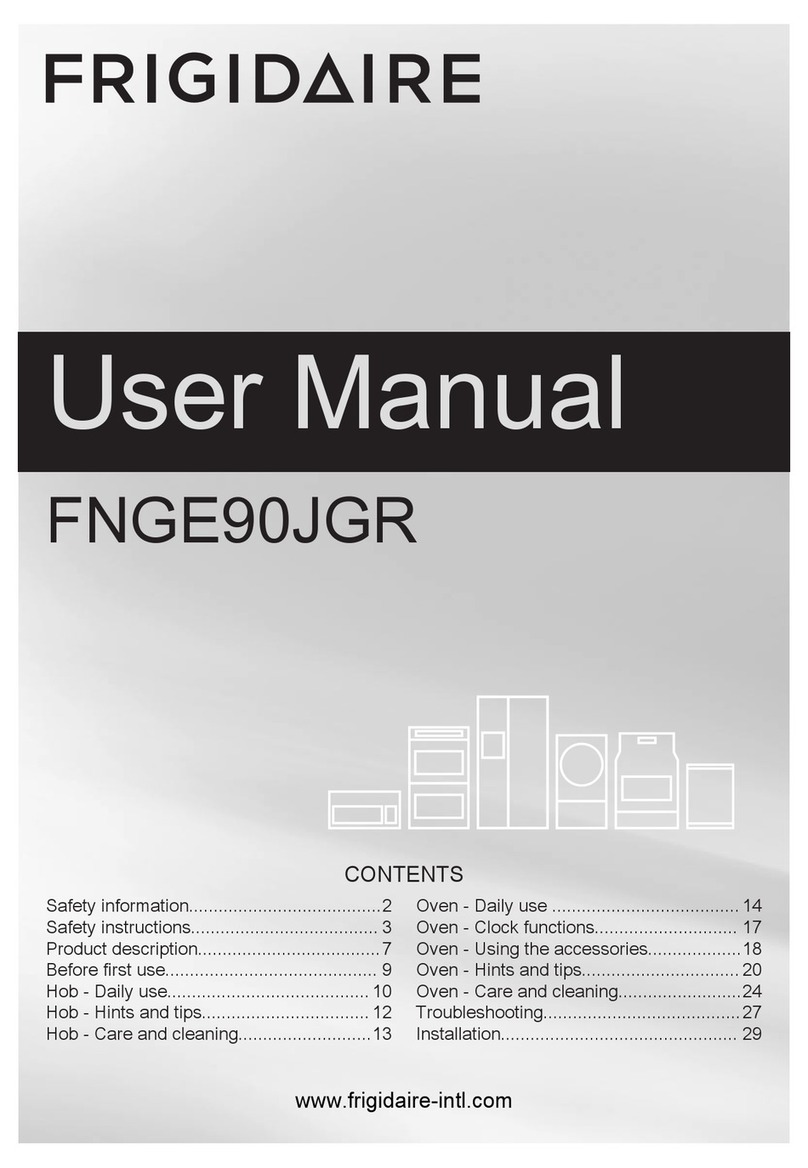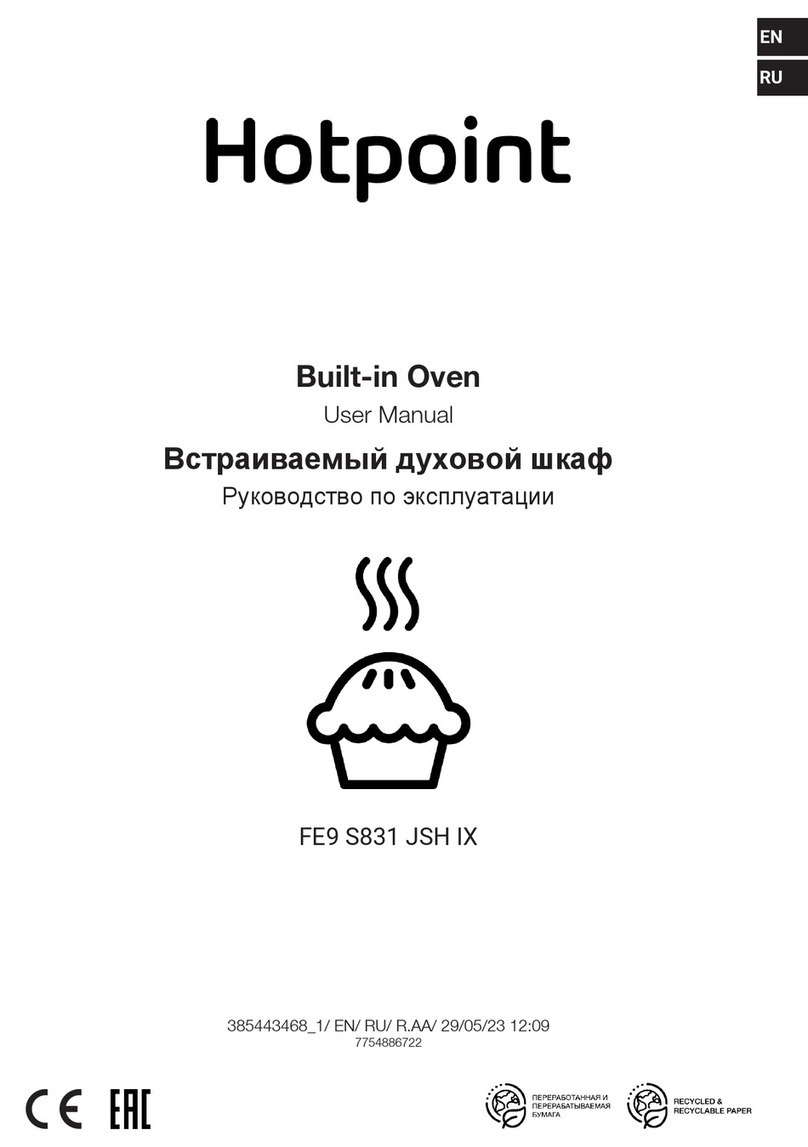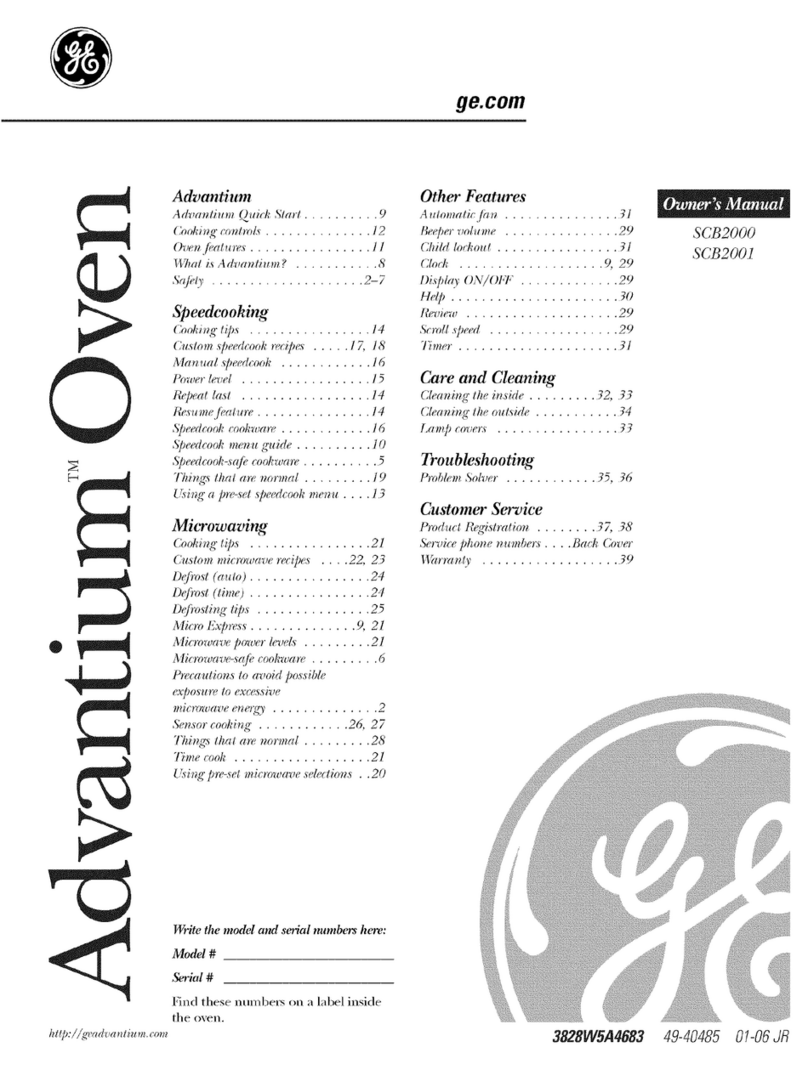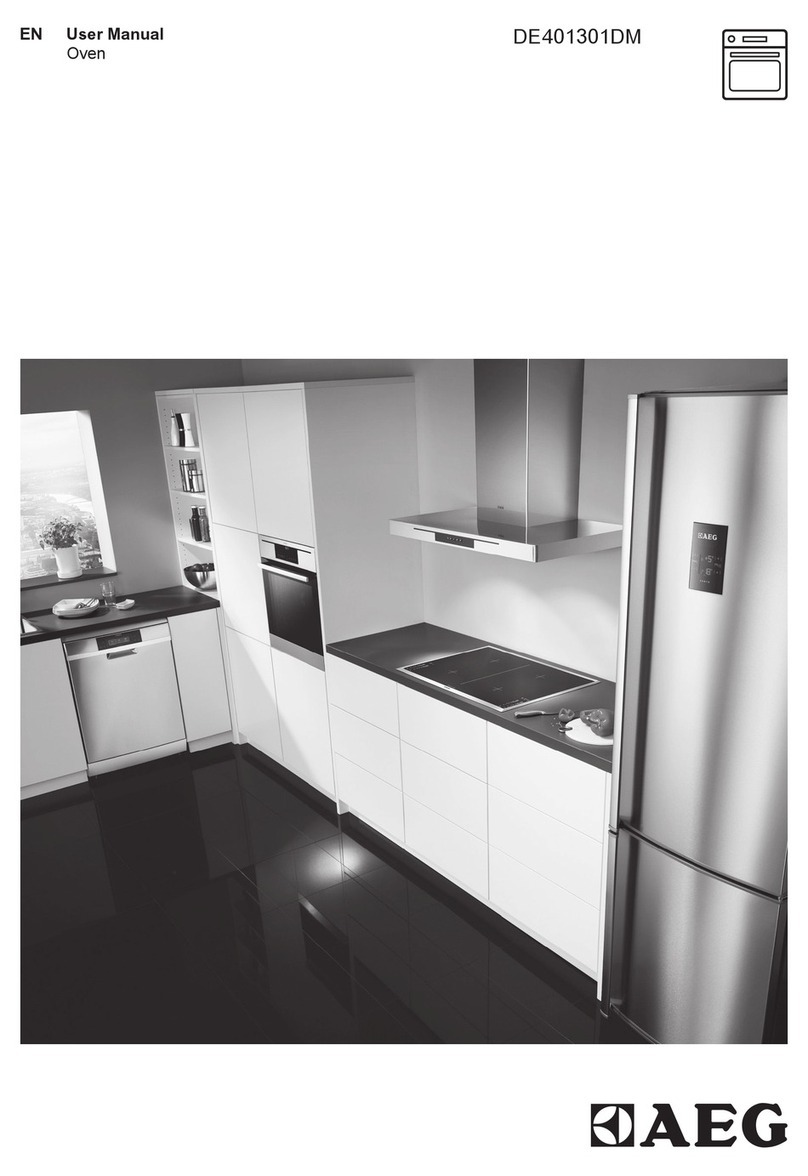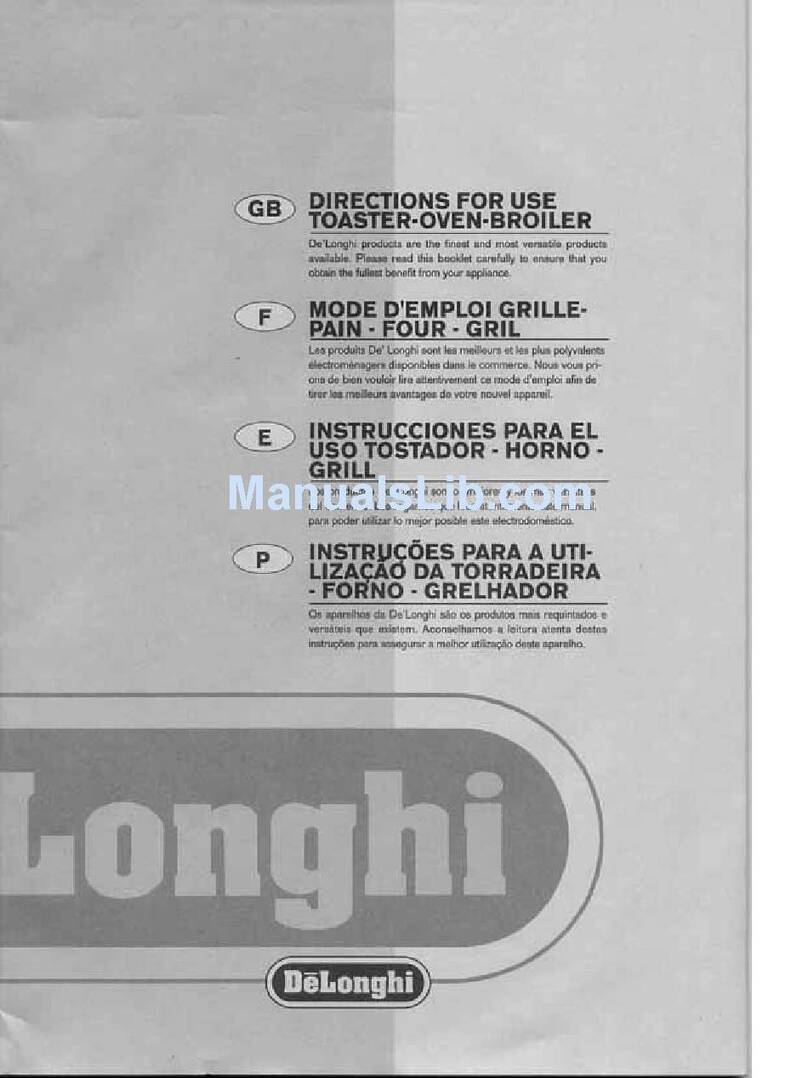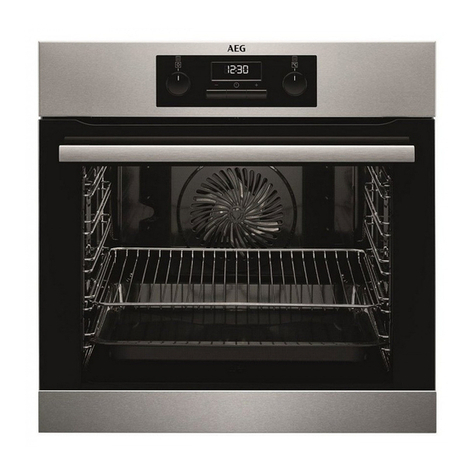
3
ÚTable of contents
[en]Instructionmanual
Safety precautions..................................................................... 4
Safety notes .........................................................................................4
Causes of damage .............................................................................4
Your new appliance ................................................................... 5
Control panel .......................................................................................5
Operating modes................................................................................5
Cooking compartment .......................................................................6
Accessories .........................................................................................6
Automatic calibration .........................................................................6
Before using the appliance for the first time........................... 7
Setting the language ..........................................................................7
Setting the clock .................................................................................7
Setting the water hardness range ...................................................7
First use ................................................................................................8
Cleaning the accessories before use .............................................8
Operating the appliance............................................................ 8
Filling the water tank ..........................................................................8
Switching on the appliance...............................................................8
Switching off the appliance...............................................................9
After each use .....................................................................................9
Electronic clock ....................................................................... 10
Clock display .................................................................................... 10
Timer .................................................................................................. 10
Cooking time .................................................................................... 11
End of operation .............................................................................. 11
Preset operation............................................................................... 11
Setting the clock .............................................................................. 11
Checking, correcting or deleting settings ................................... 11
Automatic programmes........................................................... 12
Setting a programme ...................................................................... 12
Notes about the programmes ....................................................... 12
Programme tables ........................................................................... 13
Memory..................................................................................... 17
Saving to the Memory function ..................................................... 17
Starting the memory function ........................................................ 17
Deleting a memory setting............................................................. 17
Childproof lock......................................................................... 18
Lock.................................................................................................... 18
Permanent lock ................................................................................ 18
Basic settings........................................................................... 19
Automatic safety cut-out......................................................... 19
Care and cleaning.................................................................... 20
Cleaning agents ............................................................................... 20
Oven cleaning aid............................................................................ 21
Descaling........................................................................................... 21
Removing and fitting the appliance door.................................... 22
Cleaning the door panels............................................................... 23
Cleaning the rails............................................................................. 23
Troubleshooting........................................................................24
Replacing the cooking compartment bulb ................................. 25
Changing the door seal.................................................................. 25
After-sales service....................................................................26
E number and FD number ............................................................. 26
Environmental protection ........................................................26
Environmental protection ............................................................... 26
Tips for saving energy .................................................................... 26
Tables and tips..........................................................................26
Steam cooking ................................................................................. 26
Hot air ................................................................................................ 27
CircoSteam®.................................................................................... 27
Vegetables ........................................................................................ 27
Side dishes and pulses .................................................................. 28
Poultry and meat.............................................................................. 28
Fish ..................................................................................................... 30
Cooking meat at a low temperature ............................................ 30
Bakes, soup ingredients, etc......................................................... 31
Dessert, compote ............................................................................ 31
Cakes and pastries ......................................................................... 31
Reheating food................................................................................. 33
Defrosting.......................................................................................... 33
Dough proving.................................................................................. 34
Juicing................................................................................................ 34
Preserve............................................................................................. 34
Frozen products............................................................................... 34
Test dishes ................................................................................35
Produktinfo
Additional information on products, accessories, replacement
parts and services can be found at www.neff-
international.com and in the online shop www.neff-
eshop.com
